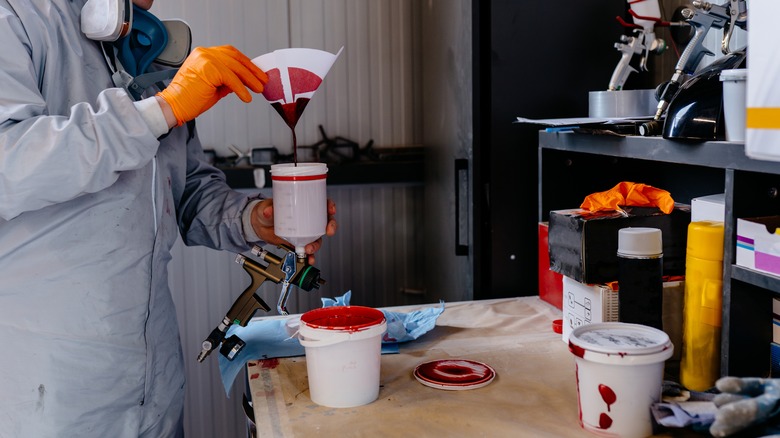Here’s a fun fact to ruin your day: Your car isn’t painted with “Toyota paint” or “Ford paint.” If you’ve ever gone into a body shop after a parking-lot kerfuffle and demanded the shop use “genuine Mazda paint,” they probably gave you a knowing nod while internally screaming. Car companies are brilliant at a lot of things — like building cars. But they’re not in the business of chemical manufacturing. Instead, they outsource the sophisticated science of paint to chemical giants like PPG, BASF, and Axalta. These companies actually develop and produce the coatings.
The painter’s job is to use all the tools and skills at their disposal to perfectly mimic a color laid down by a robot. Oh, and your paint may vary factory-to-factory or depend on how much an automaker cares about quality control. Paint also can fade over years in the sun or may have been previously resprayed by someone who didn’t have an opinion on gray versus gray. Now it’s beginning to not sound so simple after all.
It’s not just the paint code, man
The painter can just look up the paint code on your door jamb and mix up a batch, yeah? Sure, but only if you want your car to look like a monotoned Harlequin. That code is merely the ticket to get into the ballpark. Unfortunately, your car’s color began changing the second it rolled into the sunlight. The relentless assault from our closest star, also known as photodegradation, breaks down the paint’s polymers and pigments over time, causing it to fade. Between bird droppings, tree sap, and road salt, your paint takes a beating that sounds like a bad “Jackass” stunt.
But even if you stored your ride in a hermetically sealed bubble, the color still might not be perfect. Automotive manufacturing is a game of scale, and tiny variations are an accepted reality. A single paint code can have many documented variants from the factory. The painter isn’t matching a theoretical color; they’re matching your specific car, with all its history and quirks.
So I should just get a white car, is that what you’re saying? Well, white cars do account for 36% of new cars sold — at least in 2023. But no, let’s take Ford’s ubiquitous “YZ” color code — you may know this as Ford van white, or more formally Oxford White. This calls for hues of iron yellow, a little red oxide, and a finish with lampblack. It’s never really as easy as it seems when it comes to color theory.
The digital eye and the artist’s hand
Modern body shops blend tech with finesse. On the tech side is the multi-angle spectrophotometer, a handheld gadget that acts as a digital eye. A tech places it on your car’s paint, and it reads the color from several angles, capturing not just the hue but also the “flop” — how metallic particles, pearl flakes, or even the clear-coat top layer change appearance in different light. This creates a digital mugshot that’s compared against a massive global database. With automakers having variants just between factories to start, paint makers will track and address common paint characteristics over time. Then they release “service mixes” to the database to address paint variances over time.
But technology only gets you in the correct section of the proverbial ballpark. The real magic happens in the painter’s hands. Before a single drop hits your car, they’ll create a spray-out card — or a test panel separate from the vehicle — to verify the match with their own eyes, under different light sources, from their spray gun, and on that particular day. If it’s not perfect, they’ll engage in the art of tinting, manually adding minuscule amounts of other colors to nudge the formula into perfection. All of this, by the way, is done on a digital scale to the tenth of a gram.
Color matching is part science experiment, part art project. The next time you pick up your freshly painted car, remember — it wasn’t “Mazda paint” that saved the day. It was the painter who found your car the perfect seat in the ballpark.


